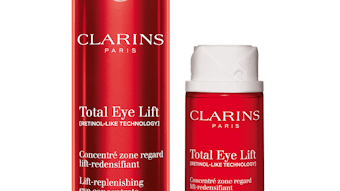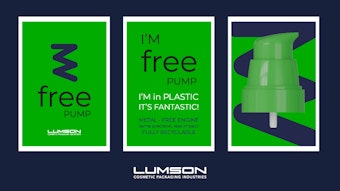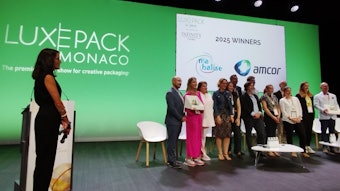Dan Abramowicz, executive vice president, Crown Packaging Technology; and Kate Achelpohl, director, member communications, PMMI, talk about increased demands for sustainable innovation in packaging from both consumers and retailers.
- Retailers are playing as large a role as consumers in driving the evolution of sustainability in packaging.
- The sustainable attributes of a package can be a factor in the purchase decisions of consumers.
- Many strides made in sustainable manufacturing have resulted from companies employing good economics.
- There are tremendous cost savings to be found within any company’s operations if it starts asking questions about how it operates.
- Certainly, innovation undertaken to comply with a regulatory issue helps to improve brand loyalty.
GCI: What have been your efforts toward sustainability, in terms of both production and products offered?
Dan Abramowicz: We pay a great deal of attention to reducing metal, eliminating spoilage and increasing efficiency. These efforts help to promote sustainability through material and energy savings while also reducing costs for customers.
Crown was one of the first companies in the U.S. to initiate a recycling program and it played a leadership role in establishing European Metal Packaging (EMPAC), an organization that brings together producers of rigid metal packaging and raw materials suppliers along with their national associations to promote the benefits of metal packaging and recycling efforts across Europe.
Additionally, we cannot overlook the inherent sustainability benefits of steel that are evident in both Crown’s aerosol containers and specialty packaging. Steel is the most commonly recycled material in the world. Steel containers are recycled at a rate of 62% in the U.S., which helps save 70% of the energy required for primary production. Metal is also infinitely recyclable. Unlike many other materials, recycled steel never degrades in quality and remains identical to virgin steel. A steel cosmetics container can be melted down and used for the manufacture of cars, food cans or another decorative container.
In time, metal packaging has also been lightweighted to save material. Steel aerosols are up to 18% lighter than they were 20 years ago. The reusability of containers is another important sustainability characteristic. Metal’s durability allows consumers to re-use decorative containers again and again to hold their own personal belongings while extending exposure to brand messaging.
Kate Achelpohl: PMMI’s primary focus is on delivering information to the marketplace about all aspects of sustainability In 2006, WalMart chose Pack Expo, our annual packaging and processing event, to launch its packaging scorecard. The show (which will be held October 31– November 3 in Chicago) continues to be a strong venue for companies to share their approaches to this issue.
Two years ago, PMMI collaborated with the Grocery Manufacturers Association (GMA) and Deloitte on a study we called “Sustainability: From the Board Room to the Break Room.” It was designed to illustrate some of the challenges and emerging issues that the packaging industry would face relative to sustainability, as well as share some best practices toward moving the concepts of sustainability from a message point at the CEO level, and down to the production team.
Our goal was to convey simple, pragmatic approaches that any company can leverage to begin sustainability-oriented efforts such as “lean and clean” design concepts. We wanted to simplify the lofty ideas of sustainability down to ready-to-implement tactics.
GCI: How do these efforts impact brand owners?
Abramowicz: The sustainable attributes of a package can be a factor in the purchase decisions of consumers. By providing brand owners with a material option that not only offers shelf appeal and convenience but infinite recyclability, Crown can help them demonstrate their eco-awareness and meet consumer demands for greener packaging.
Also, due to the long-established recycling process, consumers are well-educated on metal’s recyclability. Unlike with many other materials, this broad understanding helps drive metal’s high recycling rates, which ultimately minimize costs for brand owners.
Achelpohl: We have found that package design was the “low-hanging fruit” of the sustainability trend with the advent of new materials and packaging formats. And this continues to be the primary focus of most consumer goods companies. So, sustainability efforts directly impact the brand owner because it impacts the design of the product for retail efforts.
On the back end, brand owners also have the opportunity to incorporate packaging machinery to meet sustainability goals. New technologies allow companies to reduce carbon footprints, decrease water and energy usage, and improve overall efficiencies.
GCI: How well has the beauty industry, in general, embraced these efforts and translated them effectively into consumer products?
Abramowicz: The beauty industry has stayed ahead of the pack in embracing more sustainable packaging and projecting eco-awareness with its products.
Aveda Corporation has built a reputation as a company that prioritizes earth and community care. Aveda has [marketed] organic products since 1994 and has sponsored an annual Earth Month campaign to promote the conservation of water and other clean water-related projects. The company also reflects its eco-awareness with recyclable packaging.
The Estée Lauder Companies [which owns the Aveda brand] is another company that has established itself as a leader in sustainable innovation, and also promotes the sustainability of its products and packaging.
Working within the beauty industry, Crown Speciality Packaging created an advanced decorative perforation method for the metal packaging used to pair up Jean Paul Gaultier’s Le Male and Classique fragrance ranges. This innovative solution was both sustainable and added unique shelf appeal.
Importantly, packaging that provides sustainability benefits can do so in ways that prevent product waste. [In 2009], Sara Lee announced the introduction of its Williams Confort Pro Mousse Crème, a product with moisturizing properties formulated to eliminate the need for aftershave. The product comes in a sporty-shaped aerosol provided by Crown Aerosol Europe featuring the bi-compartmented BICAN technology—which, utilizing a plastic inner bag, keeps the product and propellant completely separate and prevents the cream from drying or hardening, which increases its lifespan, reducing product waste due to expiration.
Achelpohl: We’ve seen strong movement in the sustainability efforts of beauty companies. Much of this effort has been in the lightweighting of bottles, as new technologies allow manufacturers to produce the same product package with less material than before. Not only is this an environmental benefit, lightweighting can also produce cost and manufacturing advantages for companies.
A great example of integrating sustainability in cosmetic packaging that comes to mind is Plant Love lipstick from Cargo Cosmetics. The product comes in compostable tubes made from corn, a renewable resource, and the paper packaging is infused with flower seeds allowing you to plant it. It is efforts like these that clearly demonstrate how far sustainability has come.
GCI: Can consumer demand still be considered the greatest driver of sustainability efforts? How has the economy impacted both consumer demand and efforts, generally speaking?
Abramowicz: Retailers, such as WalMart, are playing as large a role as consumers in driving the evolution of sustainability in packaging. By trying to stay ahead of the curve, they helped boost the efforts of packaging materials suppliers in creating packaging that is more eco-friendly and cost-efficient. However, consumer demand still plays a significant role in driving sustainability efforts.
Achelpohl: It is difficult to say that consumer demand is the sole driver in sustainability efforts. In fact, it is retailers who continue to push these issues, and they are primarily for economic reasons. Any change to packaging always impacts the consumer directly, but the lightweighting of packaging, as noted, simply lowers the overall cost of goods, and improves a company’s bottom line.
I certainly believe that consumers are more aware of sustainability as an issue, and highly aware consumers are voicing what they believe should be the proper package size. But it is also clear that sustainability efforts just make good business sense and are strongly tied to the normal continuous improvement processes that companies have run for years—now they have a different approach.
GCI: What opportunities—such as product innovations, unexpected cost savings and efficiencies—have sustainability efforts created or revealed? How has this fostered product development? How is that development realized on shelf?
Abramowicz: Actually, many strides made in sustainable manufacturing have resulted from companies employing good economics. An industry focus on discovering more cost-efficient options in manufacturing, and the implementation of practices that reduce spoilage, material use and energy consumption are measures that have resulted in more sustainable products.
One example is how the lightweighting of metal packaging generates more material savings.
Innovations in sustainable packaging have also been reactionary to the implementation of new regulations. Last year, Crown introduced its EarthSafe Dispensing System, which uses a multi-layer barrier piston that eliminates primary and secondary gas permeation. The technology was developed to help brands accommodate California’s new restrictions on VOC levels, effective as of January 2010, and which may become standard practice in other places.
Achelpohl: There are tremendous cost savings to be found within any company’s operations if it starts asking questions about how it operates. New procedures are being developed that save water and downtime during changeover. Machinery is being designed to handle different gauges and smaller packages. We are even seeing companies changing their air compressor usage, and adjusting how they power their line, all in an effort to be sustainable, increase their efficiencies and reduce costs.
GCI: From your vantage point down the supply chain from the consumer, what have been the challenges in meeting evolving consumer aspirations for sustainable products and brands that can, increasingly, demonstrate sustainable efforts?
Abramowicz: The increased demand for sustainable innovation from both consumers and retailers has challenged materials providers to enhance efficiency throughout our own supply chain, as well as the supply chains of our customers.
The lightweighting of metal packaging has certainly helped to reduce the weight of products in shipping. Crown has also worked to help consumers enhance the tracking of products for increased efficiency. A few years ago, our company worked with QinetiQ to develop a new generation of RFID chips that can be used with metal packaging and liquid products for a lower cost than traditional chips. Traditional chips would not work with either due to signal reflection, detuning and grounding issues. The chip acts as a wave guide to capture radio waves. By helping our customers better track their products, they can enhance their supply chains to be more energy-efficient through improved inventory management.
Achelpohl: The biggest issue we see from a machinery perspective is the significant adjustments to equipment that have to be made in order for a company to leverage the new materials or smaller gauge packages. A new packaging concept is what we’d call “origami,” or art, something rare and only used by a few people until you get the machinery up and running to handle a large-scale production run. Once this is in place, brand owners are able to create the new and exciting (and sustainable) packaging that consumers are looking for.
GCI: Crown’s EarthSafe Dispensing System was designed to help brand owners comply with directives from the California Air Resources Board—a measure mandating the reduction of volatile organic compounds in certain consumer products from Jan. 1, 2010, forward. A press release further stated that the new technology also helps brand owners achieve greater consumer preference and loyalty by significantly improving product interaction and convenience.
How often is it that an innovation undertaken to comply with a regulatory issue also translates to one that improves brand loyalty? Are these opportunities unique, or at least more prevalent, when exploring product development from an eco or sustainable position?
Abramowicz: Certainly, innovation that is undertaken to comply with a regulatory issue helps to improve brand loyalty. Many tamper-evident packaging features that were adopted to comply with regulations have impacted and grown brand loyalty.
We expect to see consumers react similarly to sustainable technologies that are introduced to meet new regulations. So far, several brands have demonstrated interest in adopting the EarthSafe Dispensing System. Though this recently introduced technology has yet to go to the consumer market, we expect to see an application of it in the near future.
GCI: How is packaging machinery impacting the efforts of suppliers, and subsequently brand owners, for sustainable practices? What advances are you seeing from your membership?
Achelpohl: As I mentioned, the responsibility of bringing a sustainable product to life falls on the shoulders of machinery suppliers. Our members are consistently developing new technologies that not only make sustainable products possible but also enable manufacturers to meet their own sustainability goals through cost and waste reduction within their production lines.
Jeff Falk is senior editor of GCI magazine.
For more from Joe Funicelli, CEO/president, Unifoil Corporation, and Mark Ormiston, director of research and development, Anomatic Corporation, click here.









